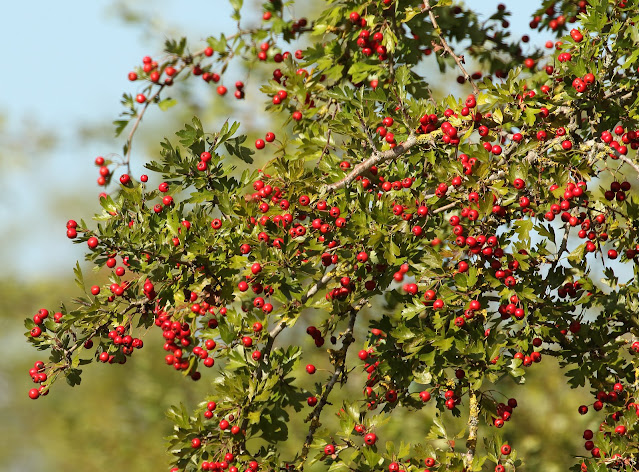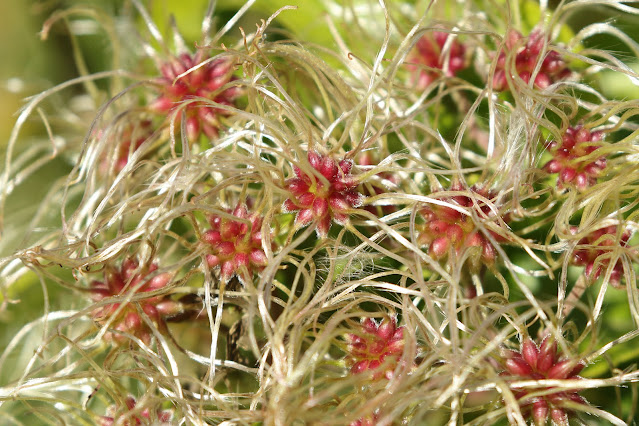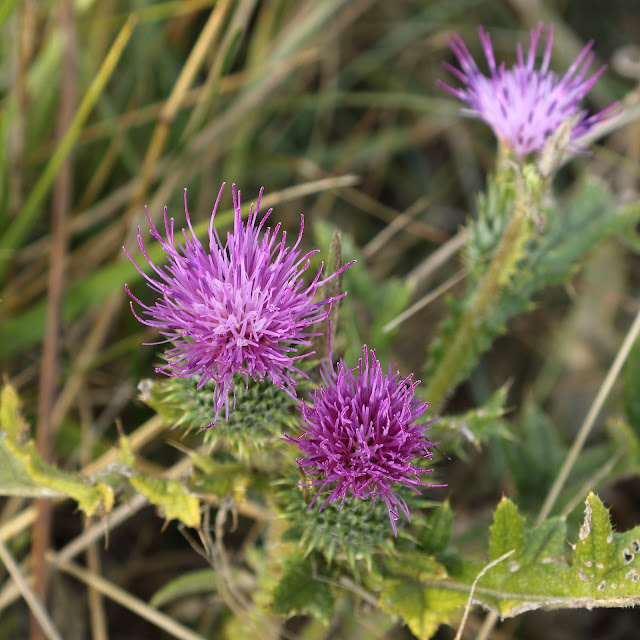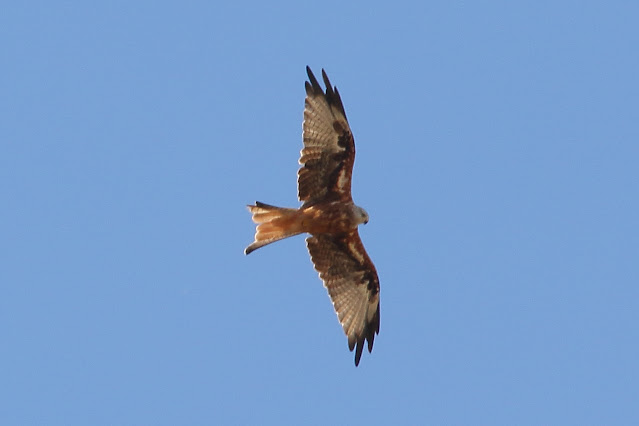August 2022
Amphibians and Reptiles
Not surprisingly, very few sightings this
month due to the very dry spell.
Common Toad seems to have managed the best with two
reports from both GA and LA gardens, with one being spotted twice in the toe of
a walking boot, as well as walking across the lawn.
Grass Snake – one about 3ft. long was seen on the
LSA.
Birds
A total of 47 species were
seen or heard this month in a total of 283 records, which is quite impressive
given that August is generally perceived as a ‘quieter month’ for birds. As
summer draws towards a close, the Swift are now largely gone, and unusually large
gatherings of both Swallow and House Martin have been reported, suggesting a
good breeding year for these species.
A Kingfisher
was reported fishing along the river near the recreation ground (16th), and
unusually a Tawny Owl was spotted during th day along the ORC (9th).
Little Grebe
have successfully bred in the reeds around the GP lake, with both an adult and
a well-grown juvenile seen on several occasions (9th-25th). Two Common Sandpiper
were spotted feeding around the lake edge as they passed through on passage
south (10th), and groups of Barnacle Goose and Canada Goose, as
well as a Grey Heron, were seen there on 18th. Moorhen and Mallard
were also reported on GP lake.
The last of four Swift
nests at one location was still occupied on 3rd, with the birds departing
shortly afterwards. House Martin were also still nesting around Mortlock
Gardens, with 2-4 adults regularly seen there until 20th, and from mid-month larger
gatherings of 10-50 House Martin were reported at several locations. Loose
flocks of 10-15 Swallow also continued to be reported on the LSA and GP.
Good numbers of Pied
Wagtail continued to be seen in paddocks on the LSA, and 30-50 were seen
feeding on the Perse sport fields and GP cricket green. More unusually, two Grey
Wagtail were spotted in a Cambridge Rd garden (7th), and a juvenile Yellow
Wagtail was reported on GP (9th).
Mixed flocks of Blue
Tit, Great Tit and Long-tailed Tit were seen later in the
month, the numbers now swollen by youngsters, and were occasionally reported to
contain 1-2 Coal Tit and a Chiffchaff. Coal Tit also continued to be seen
regularly in a Cambridge Rd garden, as were 1-2 Jay.
Up to four Buzzard
were often seen this month (16 reports) circling above several sites and often
heard mewing. A Red Kite was spotted four times, a Sparrowhawk
seen four times, and a Kestrel spotted once.
A Blackcap was
spotted along the ORC (7th), and a Reed Warbler heard in the reeds on GP
(9th). There were also single reports of
a Yellowhammer and a Skylark singing along the ORC.
Chaffinch, Greenfinch
and Goldfinch continued to be seen in similar numbers to previous months
around feeders, and Robin, Dunnock, Blackbird and Wren
were all reported. A juvenile Great Spotted Woodpecker was also seen on
feeders on Lewis Cres, and a Green Woodpecker was often seen in a Cambridge
Rd garden.
Butterflies and other insects
This month overall, the
number of butterflies seen has dropped off somewhat. However, the Brown
Argus butterfly and the Emerald Damselfly were both reported for the
first time this year, and a total of 26 different species were reported within the
104 records received: butterflies 74, odonata 5, bees 5, others 20.
Butterflies: The
Brown Argus was reported for the first time this year (7th and 27th, 2
reports, blog
link). Whilst similar in appearance to a female Common Blue, the Brown
Argus can be distinguished by having more and better defined orange spots on
the topside of the upper wing.
The number of reports of Small
White and Meadow Brown were particularly high this month, with good
numbers of Comma, Large White, Holly Blue and Red
Admiral also being seen.
Conversely, the frequency of Small
Tortoiseshell, Brimstone, Gatekeeper, Ringlet and Marbled
White sightings were all obviously down compared to July. This is a little
unexpected for Brimstone and Small Tortoiseshell, perhaps suggesting
a slow start to their second broods this year. However, for Gatekeeper, Ringlet
and Marbled White these declines very much align with the normal timings
of their broods, which all peak in late July then drop off sharply during
August. The relative frequency of sightings of other species was similar to
July.
Numbers of Butterfly reports: Small White
19, Meadow Brown 10, Comma 7, Brimstone 6, Holly Blue 5, Large White 5, Red
Admiral 5, Green-veined White 3, Peacock 3, Gatekeeper 3, Brown Argus 2. Others
all 1 report each: Small Tortoiseshell, Common Blue, Speckled Wood, Small
Heath, Small Copper, Silver-washed Fritillary.
Odonata: Emerald Damselfly was seen for the
first time this year (18th, 1 report), with Southern Hawker and Common
Darter continuing to be seen (both 8th-9th, 2 reports each).
Other: Hummingbird Hawkmoth particularly abundant this month (16
reports, throughout the month). Red-tailed and White-tailed Bumblebee
(5 reports in total), as well as reports of a Jersey Moth, and
caterpillars of Elephant Hawkmoth and Knot Grass moth.
Mammals
Badger - one
seen in a garden in Lewis Cres, reportedly chasing a Hedgehog.
Bat – seen
regularly in gardens on Cambridge Road and Bourn Bridge Road, probably
Pipistrelle and Serotin.
House Mouse – a
young one was spotted in a Cambridge Rd garden on 2nd.
Hedgehog – one
seen in a Lewis Cres garden being chased by a Badger, and droppings seen
regularly in a Bourn Bridge Rd garden throughout the month.
Muntjac – one
in a Cambridge Rd garden on 1st, two were spotted in a paddock on the LSA on
the 29th, and a dead one was seen on the A1307 on 11th.
Flora
A few wildflower species
were reported in bloom this month, mostly from along the ORC:
Wild Marjoram, Wild Basil, Lesser
Knapweed, Greater Knapweed, Hawkweed, Ragwort, Hoary Groundsel, Old Man’s
Beard, Lucerne, Scabious, Red Bartsia, Common Mugwort.
Weather
The total rainfall for August was 26.5
mm, which sounds encouraging but 23.5 mm fell on one day, on 25th August.
Otherwise dry. The hottest day was 38.5 degrees C on the 13th August, but the
highest temperature could have been higher as no recordings were taken for the week
before. The lowest temperature was 5.9 degrees C on the 6th August, but this
was unusual as the average was in double figures. South-westerly winds at the
start of the month, swinging to a long spell of north-easterlies.
NatureWatch Trips
One ANW trip this month; an evening walk
around Granta Park. This was well attended, but the flora was unfortunately
largely over due to the dry weather. See blog
link for a full report.
Many thanks to all those who contributed
reports of their sightings for August 2022:
Mark
Austin, Peter Brunning, David Farrant, Gaynor Farrant, Gordon Hannah, Emma
Jones, Esme Langford, Andy Merryweather, Polly Merryweather, Pamela Parris, Gareth
Rees, Gill Smith, Maggie Turner, Derek Turnidge, Diana Wingfield.



































